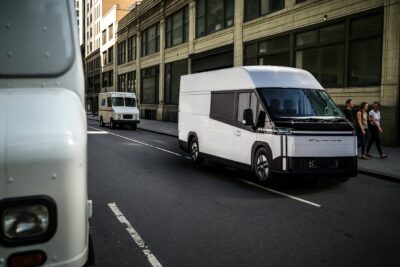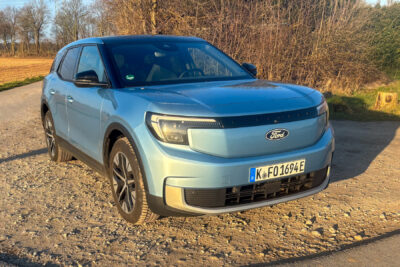January figures: EV sales up by a third across the EU
According to new statistics from the European Automobile Manufacturers’ Association (ACEA), new registrations of electric passenger cars in the EU climbed by 34 per cent year-on-year to 124,341 units – giving them a market share of 15 per cent. By comparison, market penetration in 2024 averaged 13.6 per cent. The year is off to a relatively strong start. If the EFTA states of Iceland, Norway, Switzerland, and the UK are included in the statistics, the battery-electric car market grew by 37 per cent to 166,065 units.
According to the ACEA, three of the four largest markets accounted for 64 per cent of all EV registrations in the EU in January, specifically Germany (+53.5% YoY), Belgium (+37.2% YoY) and the Netherlands (+28.2% YoY). In France, on the other hand, the market stagnated (0.5% YoY). The strong growth in Germany can be partly explained by the fact that in January 2024, following the sudden end of the environmental bonus, the registration figures for BEVs plummeted (22,474 BEVs); the curve only stabilised again in the course of 2024 and levelled off at around 30,000 to 35,000 new BEVs per month in the second half of the year. The 34,498 new registrations achieved in January 2025 thus fit the picture. However, this figure is also a remarkable result for the start of the year, regardless of the environmental bonus effect. A comparison with the UK illustrates that. There, 29,634 BEVs were newly registered in January, fewer than in Germany.
In 2024, the UK surpassed EV registrations in Germany to become Europe’s new leading EV market.

But back to the EU level: the overall passenger car market in the European Union fell slightly in January (-2.6%). In addition to BEVs, which accounted for 15 per cent of all registrations, hybrid cars achieved a market share of 34.9 per cent, surpassing petrol (29.4%) and diesel (10%). Plug-in hybrids (PHEVs) accounted for 7.4 per cent of all registrations in the EU, while ‘others’ accounted for 3.3 per cent. It is striking that, in addition to BEVs, hybrids also recorded an increase (+18%), but PHEVs lost ground slightly compared to January 2024 (-8.5%). The ACEA shows a decline of 19 per cent for petrol cars and as much as 27 per cent for diesel cars.
Finally, the country ranking in the battery-electric sector: As mentioned, Germany was ahead of the UK at the start of the year, followed by France (19,923 BEVs, -0.5% YoY), Belgium (13,712, +37% YoY) and the Netherlands (11,157, +37% YoY). These are also the only five European markets with BEV registration figures in the five-digit range. If we look at the relative growth between January 2024 and January 2025, Denmark (6,961 BEVs, +123% YoY) and Italy (6,702, +126% YoY) score particularly well.
Meanwhile, the manufacturer ranking, which the ACEA also conducts, is only meaningful for the passenger car market as a whole, as it does not differentiate between drive types. However, it shows that Tesla sold 7,517 BEVs across the EU in January, which corresponds to a whopping 50 per cent decline. However, there appears to have been an error in the ACEA statistics, as the Smart EV brand is even said to have plummeted by 97 per cent from 2,254 to 60 BEVs in the EU. According to the German Federal Motor Transport Authority (KBA) figures, 490 new Smarts were registered in Germany in January, which is only 58.5 per cent behind the previous year.
Either way, other manufacturers were responsible for the boom in BEVs in January.
acea.auto (PDF)





0 Comments